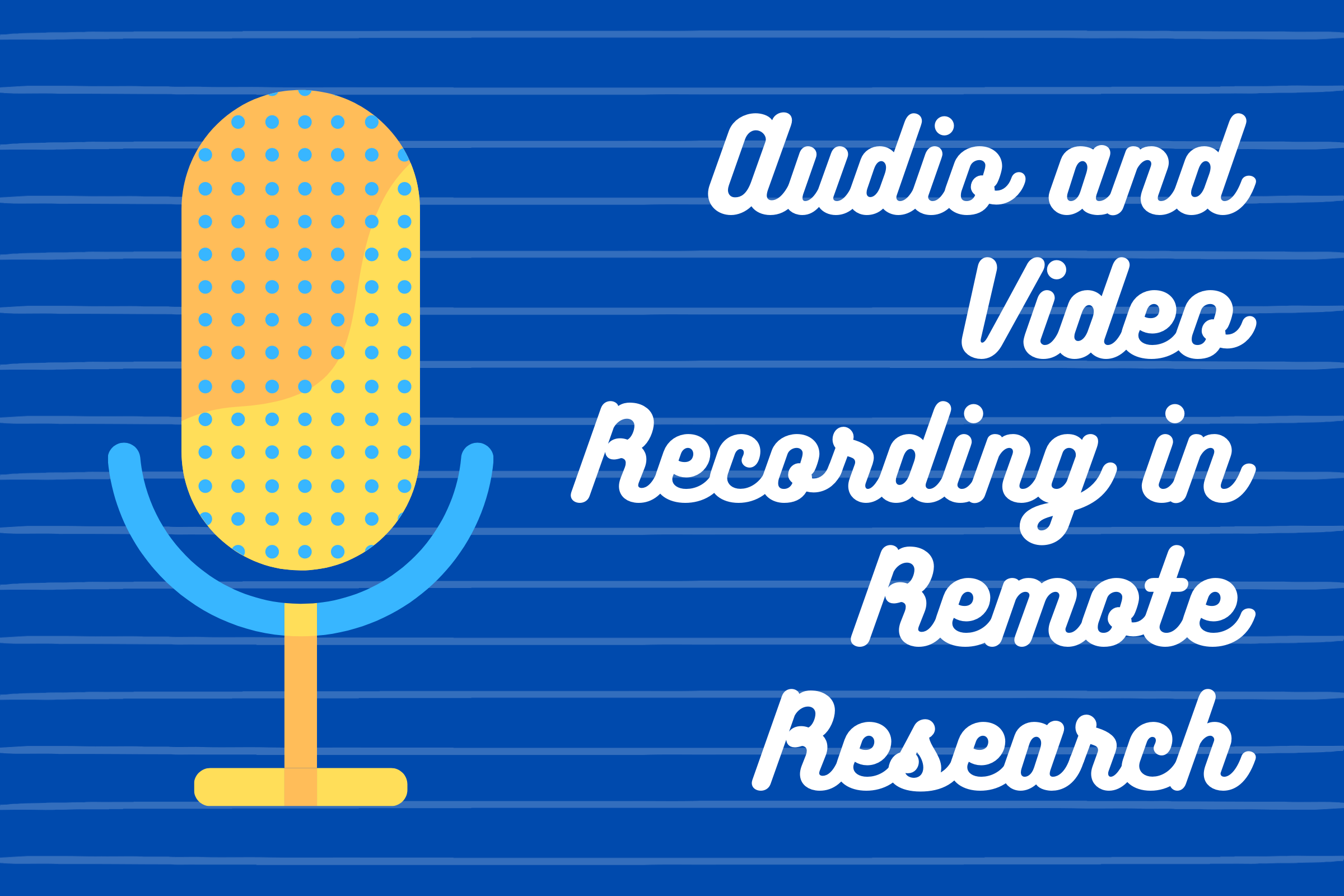Online research methods can include virtual interviews, focus groups, or individual meetings between participants and the research team. In many research contexts, researchers may want to record the study activities. A researcher using audio or video should prioritize participant protections with secure data collection and management. The following article will outline several tips for researchers when recording research activities:
Audio and Video Recording Tips in Remote Research
- Use your TC Zoom account to host and record meetings.
- Review TC IRB’s informed consent template for standardized language to gain consent for audio and video recording, before starting the recording.
- Ensure the participant is aware of when the recording will start and stop.
- Limit the number of identifiers captured in the recordings.
- Set a timeline for maintaining and then deleting recordings.
1. Use your TC Zoom account to host and record meetings.
Following TC Institutional Review Board’s (IRB) Data Sharing, Requests, & Encryption Plan, researchers should use TC Information Technologies (IT) approved software for data collection and storage. The primary investigator (PI) should be responsible for creating and hosting the Zoom meetings with participants. When recording, store Zoom meetings in Zoom Cloud. Researchers can choose whether to download the audio or video recording, and whether to download an automatically generated copy of the audio transcript.
In order to access TC Zoom, visit https://my.tc.columbia.edu/. The Zoom link is under the “Resources” tab on the top menu bar, in the General Technology Resources tab. TC IT has many informational resources to support the use of Zoom.
2. Review TC IRB’s informed consent template for standardized language to gain consent for audio and video recording.
TC IRB provides template documents with standardized language that researchers can include on their consent forms. You can download the Informed Consent Form Template and other consent documents in Mentor IRB. In the “What will I be asked to do” section of the consent form, disclose which activities will be recorded and whether recording is mandatory as part of participating in the researches study. Participants should be given the opportunity to choose whether they would like to be recorded. In these cases, please include a separate section for participants to indicate their choice to be recorded. For example:
“Audio recording (and/or video recording – specify which one or both) is part of this research study. You can choose whether to give permission to be recorded. If you decide that you do not wish to be recorded, you will still be able to participate. Please check one of the options below.
__ Yes, I give my consent to only be audio recorded.
__ No, I do not give my consent to be recorded.”
If recording is a necessary part of the research activities (e.g., coding behavioral interactions), disclose this information in the signature section of the consent form. For example, “My signature means that I agree to participate in this study and agree to be video recorded.”
3. Make the participant aware of the recording.
Once the interview or focus group session starts, the researcher should confirm again whether the participant(s) agree to be recorded. Participants should never feel coerced to continue participation in the study after signing in the consent form. Federal regulations mandate that participants be treated as autonomous beings throughout the entire research process. As such, participants can choose to stop the recording at any point in the research. Once the participant’s consent has been confirmed, the researcher should announce when the recording starts and ends.
4. Limit the number of identifiers captured in the recordings.
Video recordings are typically considered identifiable data, as they capture the individual’s photo and face. If identifiers are a concern for a participant during the video recording, researchers have several options. The first option is to only download only the audio recording from Zoom, especially if the video recordings are not needed for research purposes. On Zoom, if a participant wishes to only be audio recorded, a researcher can instruct that individual to deselect the “camera view.”
If video recordings are necessary for research purposes, participants can also change their display name on Zoom to be a pseudonym or participant ID. Always ask the participant to conduct the meeting in a private area, in order to limit the audio or video of others being inadvertently captured. If that’s not possible, clarify what protections are in place for protecting the privacy and confidentiality of a passerby (e.g., blur the image).
When audio recording, consider addressing the participant by a pseudonym or participant ID. Additionally, limit the use of identifiers (e.g., names) of others in your conversation if possible. When the audio recording is transcribed, a researcher can remove identifiers and store the de-identified transcript in a secure location separate from the original audio recording.
5. Set a timeline for maintaining and deleting recordings.
Recordings should only be kept as long as necessary for the data analysis, and then promptly deleted. If audio recordings are downloaded for transcription purposes, please delete the recordings as soon as the transcriptions have been generated. Keep in mind that sponsors or federal agencies may require that data be stored for a number of years (e.g., 3 years).
For all of these cases, researchers should indicate on the informed consent the length of time for which recordings will be stored, and at which point they will be deleted. Researchers can use their TC Google Drive to securely store files so long as they (and the research team) are the only ones with access to the file. Please review TC IRB’s Data Security Plan for more information on data storage and protection.
